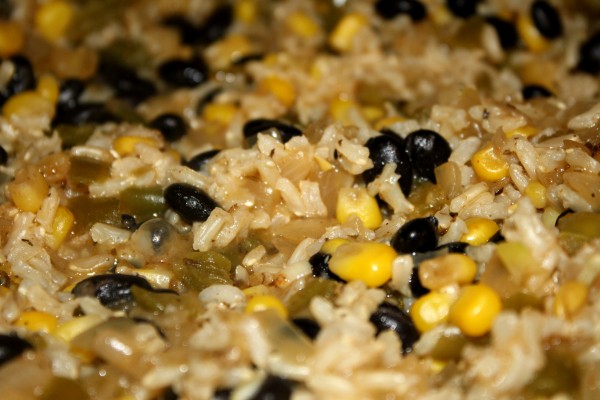These folk may not know how to cook, and they may be bummed that they have to cut back. To them, I say - hey, there's a silver lining here! There's fun in your future that you wouldn't have found if you hadn't had to start budgeting things.
Like learning all about cheap protein sources and using them in your menus. There's some major good eating here as well as some very healthy things for you and yours, which someone who's eating out a lot or buying lots of prepackaged stuff or fast food take out is going to miss.
Cheap Sources of Quality Protein
The reason that you want to know cheap sources of protein is because protein can take the biggest chunk out of your monthly food budget. Meat - beef, pork, chicken, fish - costs a lot and you buy it by the pound. To get control of your food money for the month, it's a big target.
The silver lining is while you are buying protein options to beef, pork, chicken, fish that you are also getting some very nutritious stuff. Stuff that can be lots better for you than the steak that you're not buying any more.
 | |
| Black Beans and Rice Dish | Public Domain Image |
- Eggs - 4 grams per large, fresh egg
- Quinoa - 8 grams in a serving
- Whey Protein Powder - 19 grams per 1 cup
- Milk - 10 grams in a serving of nonfat, protein fortified
- Cottage Cheese - 28 grams in 1 cup, lactose reduced
- Greek Yogurt - 16 grams in 6 oz serving (I like Chobani Vanilla Nonfat with stevia added to it)
- Beans and Rice - 9 grams in 1 cup of rice and beans combo
- Soy Products - 68 grams in 1 cup of soy nuts
- Tempeh - 31 grams in 1 cup
- Almonds 6 grams per ounce
And if you have to buy meat, then consider these two options before you go over to the Meat Department:
- Canned Tuna in Water - 39 grams in 1 cup of solid white tuna in water, drained
- Canned Mackerel - 44 grams in 1 cup of mackerel, jack, drained
- Canned Sardines - 23 grams in 1 can of sardines packed in oil, drained
Just because a food item has lots of protein in it, you're not done. Another consideration is whether or not it has all NINE essential amino acids in it, which then makes that food a "complete protein."
Of the items listed above, only the canned meat, the soy stuff, and the quinoa are complete proteins. Which doesn't mean that the others aren't great, too .. just something to consider.
And yes, you can combine things to make a complete protein. Rice and beans together, as shown above, make a complete protein. So does smearing almond butter onto toast.
Here's the Thing: This Stuff Tastes Great.
Almonds? They're great. Raw, in salads, pureed into butter. Major yum here. Red beans and rice, or what we have here in San Antonio, pintos and rice? Great stuff.
The greek yogurt is addicting, at least for me, when you add some stevia for sweetness and some pumpkin pie spice to the nonfat vanilla flavor. Better than ice cream for dessert and I am not kidding you or deceiving myself. Try it for yourself.
Quinoa? I cook this in the microwave after learning about this on a Melissa D'Arabian show and it works great. (Try her recipe which has 100 five star reviews at the time that I inserted this hyperlink for her lentil quinoa salad.) And you can buy this seed, it's not a grain, made into all sorts of pasta shapes at World Market, among other places. Elbow. Spaghetti.
You get the idea. Simple living is just filled with all these discoveries. You really do say "wow" a lot, and I'm still doing it after all these years. It's fun!
1 comment:
I used to eat a lot of different beans to help increase my intake of protein but then started researching the paleo diet. The paleo diet claims that people's bodies weren't meant to digest beans, or gluten for that matter. So I decided to start eating more eggs, fish, and chicken. It's tough on a budget, but I gave up my sweets in order to afford the other stuff :-)
Post a Comment